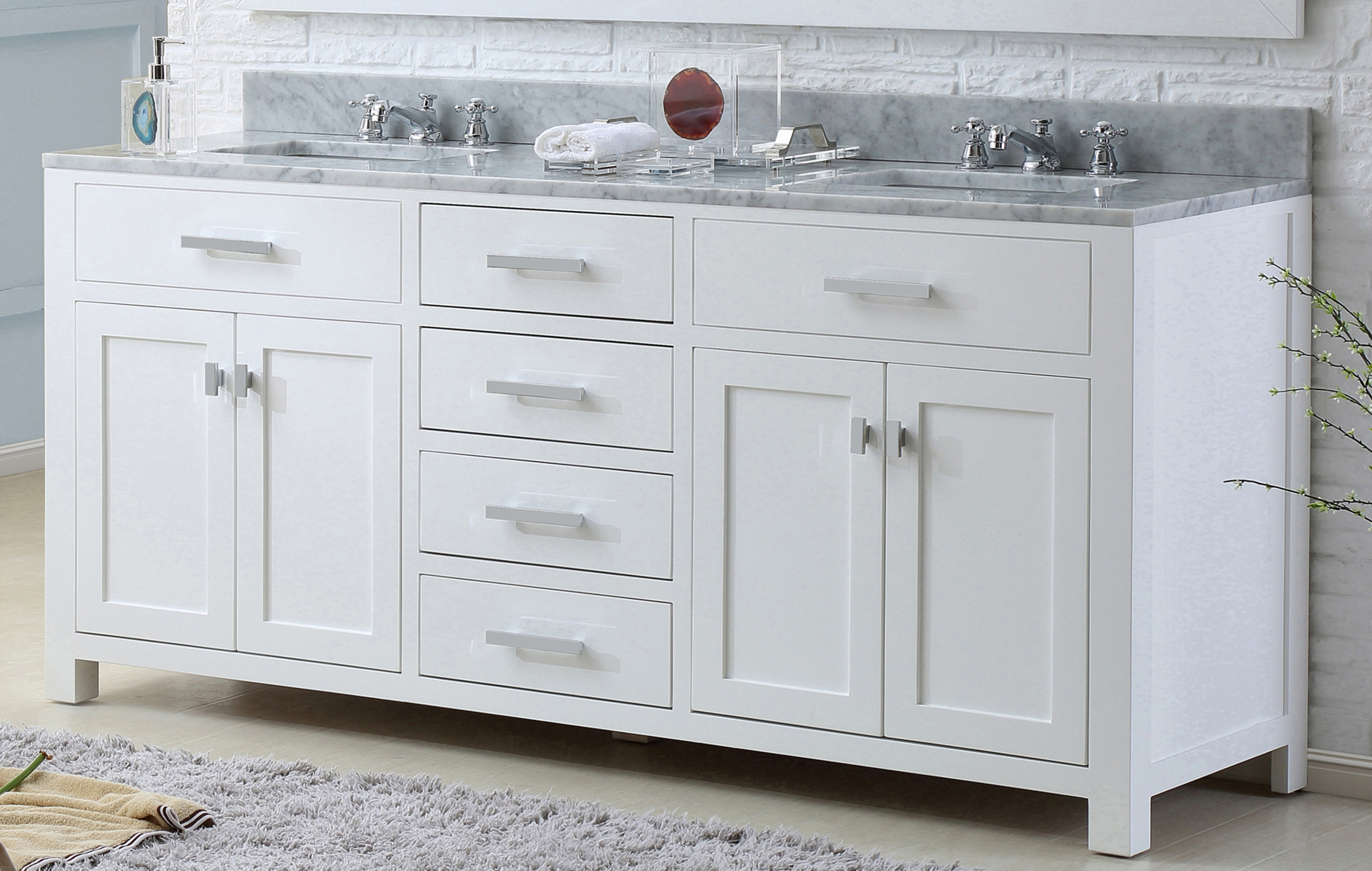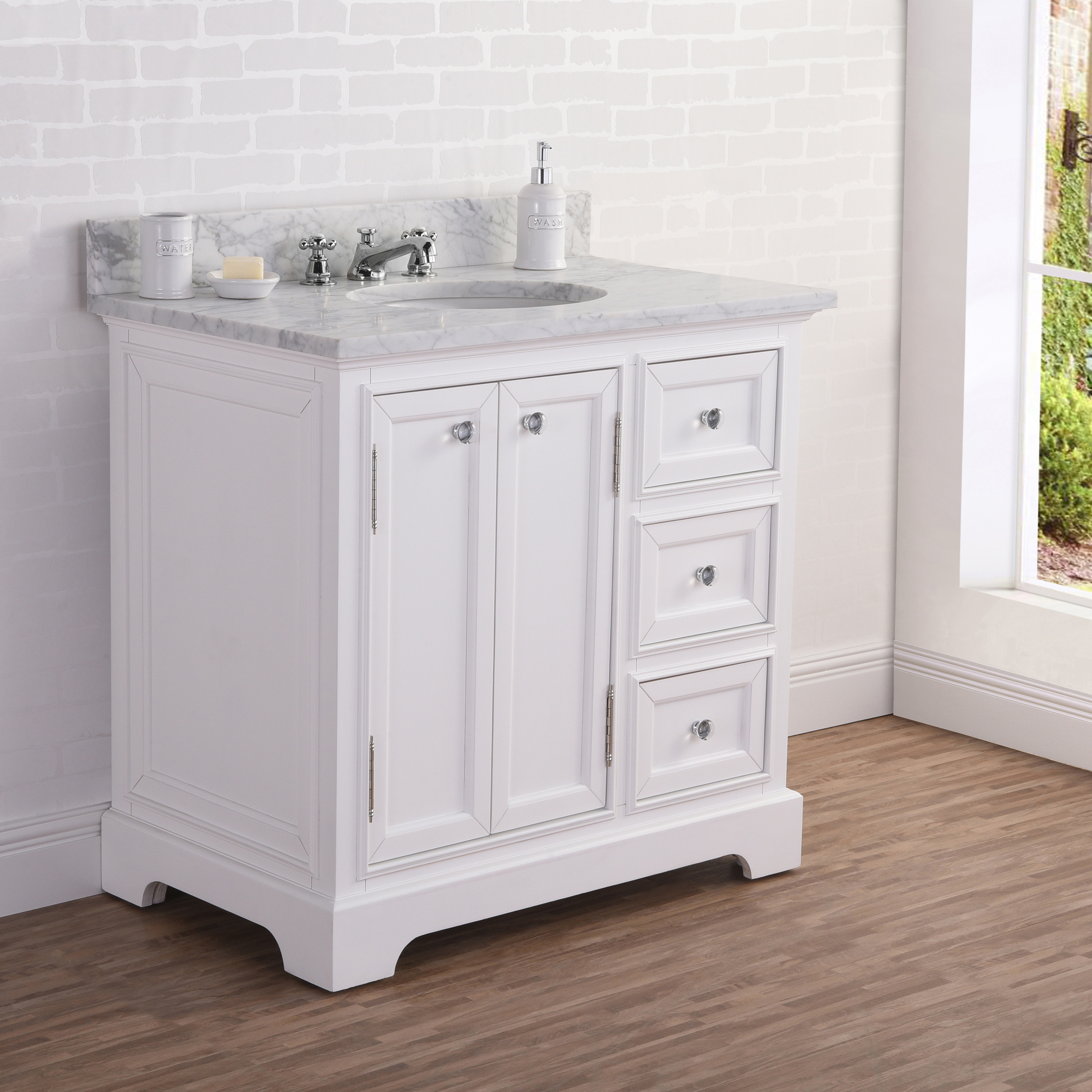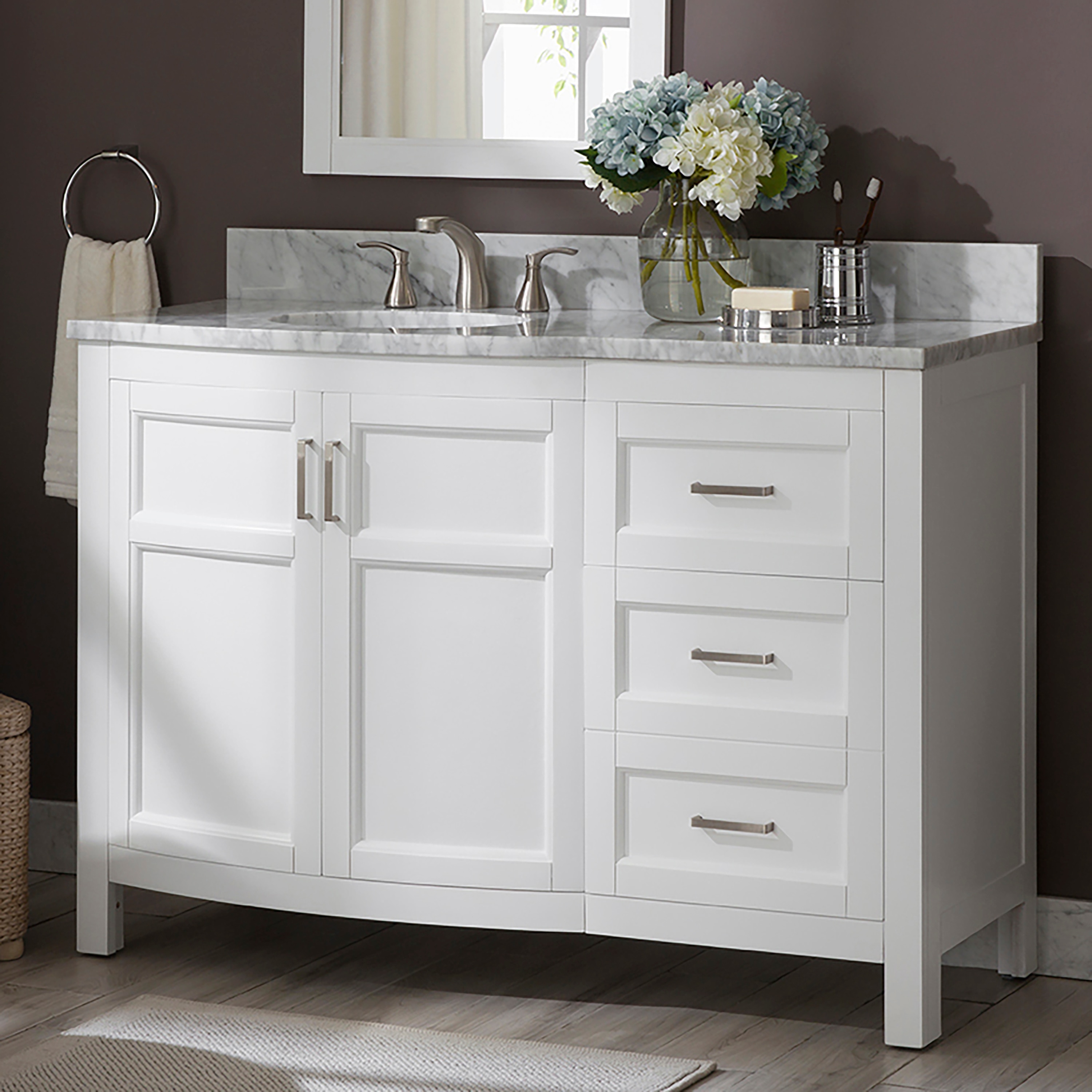Choosing the Right 60 Inch Unfinished Bathroom Vanity

Choosing a 60-inch unfinished bathroom vanity is a great way to personalize your bathroom and create a unique look. Unfinished vanities offer a blank canvas for you to express your creativity and style, allowing you to choose the perfect stain or paint to complement your bathroom decor.
Benefits of Choosing an Unfinished Vanity
Unfinished vanities offer several advantages over their pre-finished counterparts:
- Customization: You can stain or paint the vanity to match your existing decor or create a completely new look. This allows you to achieve a unique and personalized style for your bathroom.
- Cost-Effectiveness: Unfinished vanities are typically less expensive than pre-finished vanities, as the finishing process is left to the buyer. This can save you money on your bathroom renovation budget.
- Durability: Unfinished wood is often more durable than pre-finished wood, as it is not coated with any protective finishes. This makes unfinished vanities a good choice for high-traffic areas like bathrooms.
- Variety: Unfinished vanities are available in a wide range of styles, sizes, and wood types, giving you plenty of options to choose from.
Wood Types for Bathroom Vanities
Several wood types are commonly used for bathroom vanities, each with its own set of pros and cons:
- Oak: Oak is a strong, durable wood with a beautiful grain pattern. It is resistant to moisture and scratches, making it a good choice for bathroom vanities. Oak is also a relatively affordable wood type.
- Maple: Maple is another durable wood known for its smooth, even grain pattern. It is resistant to moisture and scratches, making it a good choice for bathroom vanities. Maple is slightly more expensive than oak.
- Cherry: Cherry is a beautiful wood with a rich reddish-brown color. It is known for its durability and resistance to moisture, making it a good choice for bathroom vanities. Cherry is a more expensive wood type than oak or maple.
- Walnut: Walnut is a strong, durable wood with a distinctive dark brown color and a beautiful grain pattern. It is resistant to moisture and scratches, making it a good choice for bathroom vanities. Walnut is one of the most expensive wood types used for bathroom vanities.
Features of 60 Inch Unfinished Vanities
60-inch unfinished vanities come in various styles and features to suit different needs and preferences:
- Storage Options: 60-inch unfinished vanities typically offer ample storage space with drawers, cabinets, and shelves. Some vanities even include a built-in medicine cabinet for added convenience.
- Countertop Materials: Unfinished vanities can be paired with a wide range of countertop materials, including granite, marble, quartz, laminate, and solid surface. Each material offers a different look, durability, and price point.
- Design Aesthetics: 60-inch unfinished vanities are available in various styles, from traditional to modern. Consider the overall design of your bathroom and choose a vanity that complements your aesthetic preferences.
Considerations When Choosing a 60 Inch Unfinished Vanity
When selecting a 60-inch unfinished bathroom vanity, consider the following factors:
- Space Available: Ensure that the vanity fits comfortably in your bathroom, leaving enough space for movement and access to other fixtures.
- Storage Needs: Consider the amount of storage space you require and choose a vanity with sufficient drawers, cabinets, and shelves.
- Countertop Material: Choose a countertop material that meets your needs for durability, aesthetics, and budget.
- Style: Select a vanity that complements the overall design of your bathroom and your personal style preferences.
- Budget: Set a budget for your vanity and choose a model that fits within your financial constraints.
Preparing for Installation

Getting your 60-inch unfinished bathroom vanity ready for installation involves a bit of prep work, but it’s totally worth it for a seamless and stylish outcome. Think of it as setting the stage for a bathroom makeover that’s going to wow!
Tools and Materials
You’ll need the right tools and materials to install your 60-inch unfinished bathroom vanity. Here’s a list of essentials:
- Measuring tape: To ensure everything fits perfectly, a trusty measuring tape is your best friend.
- Level: This tool ensures your vanity is straight and level, creating a polished look.
- Pencil: For marking where you’ll be drilling and making cuts.
- Drill: With the right drill bits, you’ll be able to secure the vanity to the wall.
- Screwdriver: For assembling the vanity and securing it in place.
- Wrench: To tighten plumbing connections.
- Safety glasses: Protecting your eyes is crucial when working with tools.
- Gloves: Keep your hands clean and protected during the installation process.
- Caulk: To seal any gaps between the vanity and the wall, preventing water damage.
- Silicone sealant: For sealing around the sink and faucet, creating a watertight barrier.
- Wood glue: To reinforce joints and ensure a strong assembly.
- Construction adhesive: For attaching the vanity to the wall, providing extra support.
- Vanity screws: To secure the vanity to the wall, ensuring stability.
- Plumbing supplies: This includes the faucet, drain, and any necessary adapters or connections.
- Electrical supplies: If your vanity has lighting, you’ll need wiring and electrical boxes.
Preparing the Bathroom Space, 60 inch unfinished bathroom vanity
Before you start assembling and installing your vanity, get your bathroom ready for the transformation. Here’s a step-by-step guide:
- Clear the Area: Remove any existing vanities, mirrors, or fixtures that are in the way. Clear the space to ensure you have enough room to work.
- Check Plumbing: Ensure your existing plumbing lines are in good condition and accessible for connecting your new vanity. If you need to adjust or replace any pipes, it’s best to do it now. Remember, if you’re not comfortable working with plumbing, it’s best to call a professional.
- Check Electrical: If your vanity has lighting, check your existing electrical outlets and wiring. Make sure you have the right type of outlet and wiring for your new vanity. If you need to run new wiring, call a qualified electrician.
- Prepare the Wall: Clean the wall where the vanity will be installed, removing any debris or loose paint. Make sure the wall is smooth and level. If you’re installing the vanity over tile, ensure the tile is securely attached and there are no cracks or loose grout.
Measuring and Fitting
Accurate measurements are key to a perfect fit. Here’s how to ensure your vanity fits your bathroom layout:
- Measure the Space: Measure the width and depth of the area where you’ll be installing the vanity. Make sure you have enough space to open doors and drawers without any obstruction.
- Measure the Vanity: Measure the width, depth, and height of your vanity. Compare these measurements with the space you’ve measured to ensure the vanity will fit. It’s a good idea to add a few inches to your measurements to account for any potential variations.
- Consider the Layout: Think about how the vanity will fit in the overall bathroom layout. Make sure it’s not blocking any doorways or other fixtures.
Assembling the Vanity Frame
Before you start installing the vanity, you’ll need to assemble the frame. Here’s a step-by-step guide:
- Lay Out the Pieces: Carefully lay out all the pieces of the vanity frame. Make sure you have all the necessary parts and hardware.
- Assemble the Base: Start by assembling the base of the vanity. Follow the manufacturer’s instructions carefully. Use wood glue and screws to secure the pieces together.
- Attach the Sides: Once the base is assembled, attach the sides of the vanity. Make sure they are aligned correctly and secure them with screws and glue.
- Add the Top: Once the sides are attached, place the vanity top on top of the frame. Make sure it’s aligned correctly and secure it with screws and glue.
- Install the Drawers and Doors: Follow the manufacturer’s instructions for installing the drawers and doors. Make sure they slide smoothly and open and close properly.
Finishing and Customization

Now that you have your 60-inch unfinished bathroom vanity, it’s time to get creative! This is where you can truly make it your own with a personalized touch. Whether you prefer a sleek modern look or a rustic farmhouse style, there’s a finishing technique to achieve your desired aesthetic.
Finishing Techniques
Finishing techniques are essential for protecting your vanity from moisture, stains, and scratches, while also enhancing its visual appeal. There are several popular options, each with its own advantages and disadvantages:
- Staining: Staining is a great way to bring out the natural beauty of the wood, enhancing its grain patterns and creating a warm, inviting feel. It comes in various shades, allowing you to customize the color. However, staining requires careful preparation to ensure even application and avoid blotchiness.
- Painting: Painting is a versatile option for achieving a wide range of colors and finishes. You can go for a solid color, a distressed look, or even create unique patterns and textures. Painting provides excellent coverage and durability, making it suitable for high-traffic areas.
- Varnishing: Varnishing adds a protective layer to the wood, enhancing its durability and resistance to moisture and scratches. It comes in different finishes, from matte to gloss, allowing you to adjust the level of shine. Varnishing is particularly effective for showcasing the wood’s natural grain and texture.
Applying Finishes
Applying finishes is a crucial step in the customization process. Here’s a step-by-step guide:
- Preparation: Before applying any finish, ensure the vanity surface is clean, smooth, and free from dust or debris. Sanding the wood with progressively finer grits helps achieve a smooth finish.
- Staining: Apply stain evenly using a brush, sponge, or cloth. Wipe off excess stain after the recommended drying time. Multiple coats may be necessary for deeper color saturation.
- Painting: Apply paint in thin, even coats, allowing each coat to dry completely before applying the next. Use a high-quality paintbrush for smooth application and avoid brushstrokes.
- Varnishing: Apply varnish with a brush or sprayer in thin, even coats, allowing each coat to dry completely before applying the next. Ensure the varnish is evenly distributed and free from bubbles or streaks.
Countertop and Sink Installation
Once the vanity is finished, you can install the countertop and sink. Here’s a general overview:
- Countertop: Choose a countertop material that complements your vanity’s style and complements your bathroom design. Popular options include granite, marble, quartz, and laminate. The countertop should be cut to fit the vanity top, and secured using appropriate adhesives and fasteners.
- Sink: Select a sink that matches the countertop style and complements the overall bathroom design. The sink should be installed securely and properly sealed to prevent leaks.
Customization Options
60 inch unfinished bathroom vanity – Customize your vanity to reflect your personal style. Add hardware, decorative elements, or lighting fixtures to create a unique and functional piece.
- Hardware: Upgrade the standard hardware with stylish knobs, pulls, and hinges that match your bathroom’s design aesthetic. Consider using materials like brushed nickel, chrome, or oil-rubbed bronze for a cohesive look.
- Decorative Elements: Add decorative elements like moldings, trim, or decorative tiles to enhance the vanity’s visual appeal. Choose elements that complement the chosen finish and bathroom style.
- Lighting Fixtures: Install lighting fixtures above the vanity to provide adequate illumination for grooming and enhance the overall ambiance. Choose fixtures that complement the vanity’s style and bathroom design.
